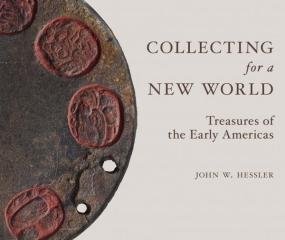The history of the early Americas is a story of before and after, defined and divided by a pivotal moment of contact between two distinct cultures. On the European side it is a tale of exploration, high-stakes treasure-seeking, and conquest. For indigenous Americans'including the Maya, the Nahua, the Taíno, and the Wari'it is the beginning of the end, a violent saga of disease, enslavement, and the loss of languages and rituals.
This collision of cultures comes to life in the manuscripts, maps, archaeological objects, and rare books that make up the collection of early American treasures in the Library of Congress in Washington, DC. Collecting for a New World relates these encounters through vivid illustrations and interpretive descriptions of more than 60 rare and priceless items. In describing for the first time the journeys of the objects themselves'via African shipwrecks, secret meetings on airstrips, discoveries in castle libraries, and journeys into unknown archaeological sites hidden deep in the jungles of Guatemala' author John Hessler reveals the role played by private collectors, whose knowledge, vision, and'in many cases, philanthropy' contribute so significantly to the collective understanding and interpretation of history and culture.

(0 Comentarios)